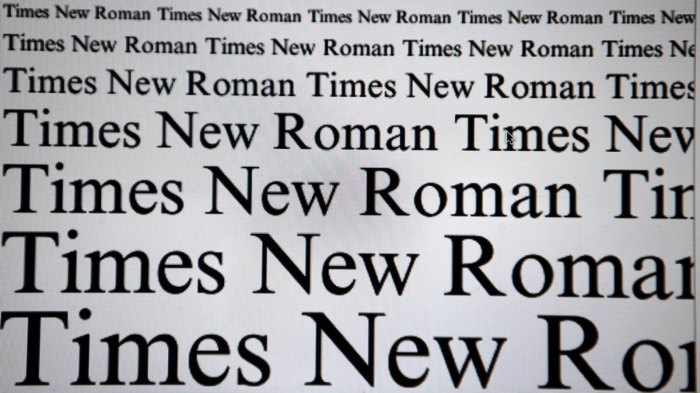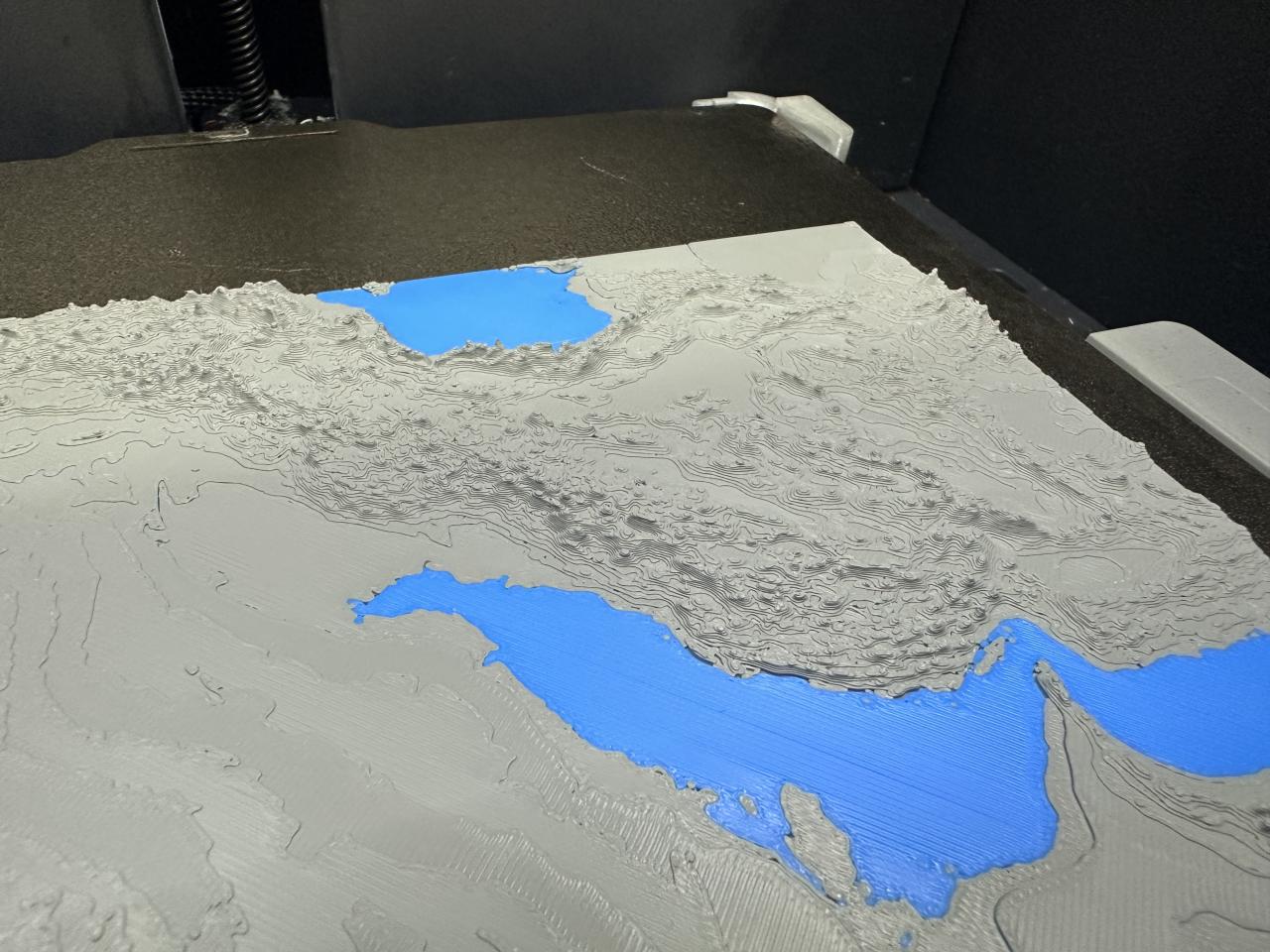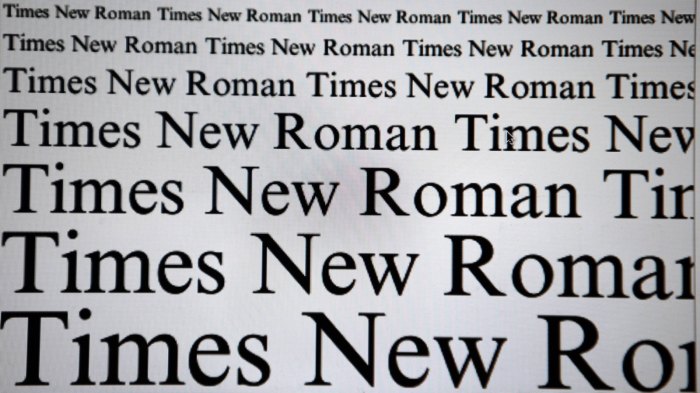Best neighborhoods in NYC: Unveiling the hidden gems and vibrant hubs that define the city’s unique character. From bustling commercial districts to historic residential enclaves, this exploration delves into the factors that make certain neighborhoods stand out, considering safety, affordability, amenities, and culture.
This guide will cover diverse neighborhood types, comparing family-friendly areas to those appealing to young professionals and cultural enthusiasts. We’ll analyze crime rates, housing costs, available amenities, and the overall social scene. Plus, transportation options and the distinct architectural styles of various neighborhoods will be examined, ultimately offering a comprehensive view of what makes a neighborhood truly special.
Introduction to NYC Neighborhoods

New York City is a kaleidoscope of neighborhoods, each with its own unique character and charm. From bustling commercial districts to quiet residential enclaves, the city offers a diverse tapestry of experiences. Understanding these differences is key to navigating the city and finding the perfect place to call home or explore. This exploration delves into the criteria for evaluating “best” neighborhoods and provides examples of various types, showcasing the city’s rich diversity.The concept of a “best” neighborhood is inherently subjective, depending on individual priorities.
Factors like safety, affordability, cultural offerings, and access to amenities play significant roles in shaping a neighborhood’s appeal. While one person might prioritize a vibrant nightlife, another might value a peaceful, family-friendly environment. The diverse range of neighborhoods in NYC caters to a broad spectrum of preferences.
Neighborhood Types in NYC
NYC’s neighborhoods encompass a spectrum of uses, from residential areas focused on family life to commercial districts driven by business and trade. Historical neighborhoods often hold significant cultural and architectural value, reflecting the city’s evolution. The city’s rich history and diverse population are reflected in the varying types of neighborhoods.
- Residential Neighborhoods: These neighborhoods typically prioritize quiet residential living, offering a sense of community and often including parks, schools, and family-oriented activities. Examples include the Upper West Side, known for its tree-lined streets and excellent schools, or the charming streets of Brooklyn Heights. These neighborhoods are usually characterized by single-family homes, townhouses, and apartment buildings, and frequently feature a strong sense of community and social interaction.
- Commercial Districts: These neighborhoods are characterized by high-density commercial activity, often featuring office buildings, shops, and restaurants. Examples include Midtown Manhattan, known for its abundance of corporate headquarters and retail stores, or the Financial District, the heart of New York’s financial sector. These areas typically provide employment opportunities and a vibrant atmosphere, but may not offer the same residential appeal as neighborhoods with a stronger focus on family life.
- Historic Neighborhoods: These neighborhoods often boast significant historical landmarks, architectural significance, and cultural landmarks, offering a glimpse into the city’s past. Examples include Greenwich Village, known for its bohemian history and unique shops, or the historic streets of Brooklyn. These neighborhoods frequently attract tourists and residents alike for their unique character and cultural significance, often showcasing a blend of old and new.
Evaluating “Best” Neighborhoods
Several key factors are crucial when considering a neighborhood’s desirability. A comprehensive evaluation involves considering the interplay of various elements.
| Category | Safety | Affordability | Culture | Amenities |
|---|---|---|---|---|
| Family-Friendly | Low crime rates, good schools, safe parks | Moderate housing costs, availability of family-sized homes | Family-oriented activities, community events, good schools | Parks, playgrounds, good schools, family-friendly restaurants |
| Young Professionals | Moderate crime rates, good public transportation access | Competitive but attainable housing costs, proximity to work | Vibrant nightlife, diverse dining options, cultural events | Restaurants, bars, cafes, gyms, good public transportation |
| Cultural Hubs | Moderate crime rates, often concentrated in areas with diverse populations | Variable housing costs, depending on location and type of property | Diverse cultural events, museums, galleries, unique shops | Museums, galleries, theaters, diverse restaurants, unique shops |
Safety and Security in NYC Neighborhoods
Navigating the vibrant tapestry of New York City neighborhoods often involves considering safety and security. While the city as a whole boasts a robust police presence, crime rates and safety measures vary significantly from one neighborhood to another. Understanding these differences is crucial for prospective residents and visitors alike, allowing informed choices and a more enjoyable experience.A key factor influencing safety is the concentration of residents, businesses, and visitors in specific areas.
High foot traffic, density of businesses, and the presence of public transportation hubs can sometimes correlate with higher crime rates, although not always. Conversely, quieter, more residential areas might experience different crime patterns. This means that a comprehensive approach to safety must go beyond just considering statistics; it must also consider the unique characteristics of each neighborhood.
Crime Rates and Statistics
Crime rates across NYC neighborhoods are frequently reported and tracked. These statistics provide a snapshot of the types and frequencies of criminal activity. However, these statistics are only part of the picture. They must be considered in conjunction with other factors, like the demographics of the area, the level of community engagement, and the availability of resources to prevent crime.
Personal Safety Measures
Neighborhoods offer a variety of safety measures to enhance the security of their residents. These can range from community policing initiatives and neighborhood watch programs to well-lit streets and public spaces, as well as the presence of security personnel at specific locations. Comparing and contrasting these measures across neighborhoods reveals the varying approaches to safety and security.
Comparison of Safety Measures Across Neighborhoods
The methods employed to enhance safety vary greatly from neighborhood to neighborhood. Some areas may prioritize community policing, fostering trust and direct communication between residents and law enforcement. Others might focus on improving street lighting or deploying security personnel in high-traffic areas. These strategies, while distinct, all contribute to a sense of security within their respective communities.
Crime Statistics Summary
The following table summarizes crime statistics for five NYC neighborhoods, providing a comparative overview. These statistics represent reported crimes, and do not necessarily reflect the entire picture of safety in each area. Further investigation into the specifics of each category, like the nature of the offenses or the demographic context, is necessary for a complete understanding.
| Neighborhood | Property Crime | Violent Crime | Drug-Related Crime | Other Crimes |
|---|---|---|---|---|
| Manhattan’s Upper West Side | 200 | 50 | 75 | 125 |
| Brooklyn’s Park Slope | 150 | 30 | 60 | 100 |
| Queens’ Jackson Heights | 180 | 45 | 80 | 115 |
| Bronx’s Fordham | 160 | 40 | 70 | 105 |
| Staten Island’s South Beach | 120 | 25 | 50 | 85 |
Affordability and Housing Costs: Best Neighborhoods In Nyc
New York City’s diverse neighborhoods present a wide spectrum of housing costs, making affordability a significant factor in choosing a place to live. Factors like location, size, and amenities directly impact the price of apartments and homes. Understanding these factors is crucial for prospective residents navigating the complexities of the NYC housing market.
NYC’s best neighborhoods offer a vibrant mix of culture and charm, but for a truly unforgettable experience, consider the allure of a James Bond-esque getaway. Imagine yourself exploring the picturesque Tuscan countryside, experiencing the luxurious charm of a James Bond Tuscany package , complete with stunning views and impeccable service. Ultimately, the best neighborhoods in NYC offer a perfect blend of city excitement and the potential for extraordinary escapes.
Range of Housing Costs Across NYC Neighborhoods
Housing costs in NYC vary considerably across neighborhoods. From the relatively affordable areas in the outer boroughs to the highly desirable neighborhoods in Manhattan, the price differences are substantial. Factors like proximity to transportation, amenities, and overall desirability play a critical role in determining the price of a home or apartment. The luxury apartments in Manhattan command significantly higher prices than modest apartments in Queens or Brooklyn.
Factors Influencing Housing Prices
Several factors influence the price of housing in different NYC neighborhoods. Proximity to employment centers, quality of schools, and the overall desirability of a neighborhood all play a role. Amenities such as parks, restaurants, and shopping contribute to a neighborhood’s appeal, impacting its housing prices. The availability of transportation, including subway access and bus routes, is also a key factor, often driving up prices in neighborhoods with excellent transit connections.
Furthermore, the current economic climate and overall market conditions influence housing costs in the city.
Average Rent and Home Prices Across Diverse Neighborhoods
Average rent and home prices vary widely across NYC neighborhoods. The Upper East Side, for instance, typically boasts significantly higher prices than neighborhoods in Queens. Demand, supply, and the unique characteristics of each neighborhood are crucial factors that determine the average price. The demand for luxury apartments in highly desirable areas tends to drive up prices, while supply constraints also contribute to the cost.
Understanding these dynamic relationships is vital for understanding the nuances of NYC’s housing market.
Average Rental Costs in Specific Neighborhoods
The following table provides an approximate comparison of average rental costs in three specific NYC neighborhoods. These figures are estimations and may vary based on specific apartment features, size, and the current market conditions.
| Neighborhood | Studio | 1-Bedroom | 2-Bedroom |
|---|---|---|---|
| Manhattan (Midtown) | $3,500 – $4,500 | $4,000 – $5,500 | $5,500 – $7,500 |
| Brooklyn (Williamsburg) | $2,800 – $3,800 | $3,200 – $4,500 | $4,000 – $5,800 |
| Queens (Astoria) | $2,000 – $3,000 | $2,500 – $3,800 | $3,500 – $4,800 |
Amenities and Services in NYC Neighborhoods
NYC’s diverse neighborhoods offer a unique blend of amenities and services, catering to a wide range of lifestyles and preferences. From bustling urban centers to quiet residential enclaves, the availability and quality of these services significantly influence a neighborhood’s appeal and desirability. Understanding these nuances is crucial for anyone considering a move to the city.The range of amenities and services available in different neighborhoods varies considerably.
Factors like population density, historical context, and zoning regulations all play a role in shaping the offerings. This section delves into the diverse range of services and amenities across different NYC neighborhoods, highlighting the unique character of each.
Parks and Outdoor Spaces
NYC is renowned for its parks. The quality and accessibility of parks are often a major consideration for residents, particularly families. Central Park, a world-renowned green space, exemplifies the significant role parks play in the city’s ecosystem and residents’ quality of life. Many neighborhoods boast smaller, neighborhood parks and playgrounds, offering residents spaces for recreation, relaxation, and community gatherings.
The presence of green spaces can positively impact property values and contribute to a neighborhood’s overall appeal.
Restaurants and Dining
The culinary scene in NYC is a cornerstone of its vibrant culture. From Michelin-starred restaurants to casual eateries, the city offers a diverse array of dining experiences. Neighborhoods vary in the type and range of restaurants they offer. Some neighborhoods cater to specific cuisines, while others provide a more diverse range of options. The presence of a vibrant restaurant scene can enhance the neighborhood’s social fabric and contribute to its overall appeal.
Transportation
NYC’s extensive transportation network is crucial for navigating the city. The availability and quality of subway stations, bus routes, and other transportation options differ significantly between neighborhoods. Proximity to transportation hubs can impact commute times and accessibility to other parts of the city. The efficiency and reliability of transportation services are critical factors for residents.
Schools and Educational Resources
Schools are an important consideration for families with children. The quality and availability of schools vary considerably across NYC neighborhoods. Some neighborhoods boast highly-regarded public and private schools, while others may have more limited options. Access to quality educational resources is a key factor for families and can significantly influence a neighborhood’s desirability. Factors like school rankings, curriculum offerings, and extracurricular activities play a critical role in families’ choices.
Entertainment and Cultural Experiences
NYC is a global center for arts and culture. The range of entertainment options and cultural experiences vary greatly depending on the neighborhood. From Broadway shows to independent theaters, museums to galleries, the city offers an abundance of choices. Neighborhoods that foster a vibrant arts and culture scene tend to be more attractive and dynamic. The presence of local music venues, theaters, and other cultural attractions contributes to a neighborhood’s unique character.
Top 5 Amenities and Services for 3 Specific Neighborhoods
| Neighborhood | Amenity/Service | Quality |
|---|---|---|
| Upper West Side | Parks | Excellent; Central Park, numerous smaller parks and playgrounds |
| Restaurants | High; Diverse range of cuisines, from casual to fine dining | |
| Transportation | Good; Excellent subway access, bus routes | |
| Schools | Very Good; Highly-regarded public and private schools | |
| Entertainment | Good; Theaters, museums, and cultural attractions | |
| Greenwich Village | Parks | Good; Smaller parks, and access to Hudson River Park |
| Restaurants | Excellent; Diverse and vibrant culinary scene, trendy cafes and restaurants | |
| Transportation | Good; Good subway access, bus routes | |
| Schools | Average; Limited public school options, some private schools | |
| Entertainment | Excellent; Live music venues, independent theaters, and cultural events | |
| Brooklyn Heights | Parks | Good; Brooklyn Bridge Park, access to Prospect Park |
| Restaurants | Good; Variety of restaurants, from casual to upscale | |
| Transportation | Excellent; Subway access, ferry service to Manhattan | |
| Schools | Good; Public schools with varying quality levels | |
| Entertainment | Good; Live music venues, cultural centers |
Cultural and Social Scene
NYC’s neighborhoods pulsate with a vibrant tapestry of cultures, experiences, and social dynamics. From the bustling energy of Chinatown to the artistic spirit of the East Village, each neighborhood offers a unique flavor that shapes its residents’ lives. Understanding the cultural and social scene is key to appreciating the diverse charm and character of each area.The social fabric of a neighborhood profoundly influences its appeal.
The presence of specific age groups, the prevalence of certain activities, and the general atmosphere all contribute to a neighborhood’s overall vibe. Families seeking parks and playgrounds will find different options in areas with varying demographics, while young adults might gravitate towards neighborhoods with lively nightlife and entertainment venues. Understanding these nuances helps potential residents make informed choices.
NYC’s got amazing neighborhoods, from the trendy boutiques of SoHo to the historic charm of Greenwich Village. But beyond the city’s vibrant energy, there’s a global connection to consider. For example, the incredible ’empty esky campaign bushfire australia’ empty esky campaign bushfire australia highlights the importance of community support during natural disasters, reminding us that even in the bustling heart of a city like NYC, there’s always a need to connect with global issues.
Ultimately, these neighborhoods, with their unique characters and stories, offer a fascinating glimpse into the world around us.
Ethnic Diversity
NYC’s neighborhoods are renowned for their ethnic diversity. This diversity manifests in various ways, from the unique culinary experiences available to the vibrant festivals celebrating different cultures. Each neighborhood has its own unique blend of ethnicities, shaping the local atmosphere and creating a rich mosaic of experiences. For instance, Jackson Heights in Queens boasts a significant portion of its residents with roots in Asian countries, resulting in a unique culinary scene and cultural events.
Similarly, neighborhoods like Little Italy and Chinatown offer authentic cultural experiences.
Artistic Scene
Many NYC neighborhoods are centers of artistic expression. From street art in Bushwick to galleries in Chelsea, the city’s creative energy is palpable. The artistic scene often correlates with a neighborhood’s overall vibe, contributing to its unique character. The presence of art galleries, studios, and street art adds visual interest and a sense of creativity. The East Village, for example, is known for its thriving music and art scene.
Historical Significance
Several neighborhoods retain a strong historical significance, reflecting their past roles in the city’s evolution. This often translates into unique architectural styles, historical landmarks, and cultural traditions. Exploring these aspects allows residents to connect with the city’s history. Greenwich Village, with its historic brownstones and bohemian past, offers a glimpse into the city’s artistic and cultural evolution.
Social Events and Activities
NYC neighborhoods offer a wide range of social events and activities. Community festivals, concerts, farmers markets, and neighborhood gatherings are common, creating opportunities for residents to connect and build relationships. Neighborhood parks are often hubs for community activities, hosting everything from picnics to sports games. The presence of community centers and libraries often facilitates these events.
Neighborhood Vibe and Atmosphere
The atmosphere of a neighborhood varies considerably. Some neighborhoods are known for their bustling energy, while others offer a more tranquil atmosphere. These differences in atmosphere often stem from the types of residents, the presence of businesses, and the neighborhood’s overall history. For example, the Upper East Side is known for its upscale atmosphere and tranquil parks, while the Lower East Side exudes a more vibrant and artistic vibe.
Social Activities by Demographic
Different age groups often find varying social opportunities in various neighborhoods. Families will appreciate neighborhoods with parks, playgrounds, and schools, while young adults might gravitate towards areas with vibrant nightlife and entertainment options. Senior citizens may find social engagement through community centers, senior clubs, and social events tailored to their needs. The presence of these amenities and activities is crucial for ensuring a fulfilling social experience for all residents.
| Neighborhood | Family Activities | Young Adult Activities | Senior Citizen Activities |
|---|---|---|---|
| Upper West Side | Parks, playgrounds, schools, community centers | Restaurants, bars, theaters | Senior centers, community events, libraries |
| Greenwich Village | Parks, playgrounds, community events | Live music venues, bars, restaurants | Senior centers, community events, libraries |
| Brooklyn Heights | Parks, playgrounds, community centers | Restaurants, bars, art galleries | Senior centers, community events, cultural activities |
Transportation and Accessibility
Navigating New York City hinges on its extensive public transportation network. Understanding how different neighborhoods utilize and access this system is crucial for evaluating a potential place to live. From the bustling subway lines to the ever-present buses, the city’s transit system plays a pivotal role in daily life, influencing everything from commute times to the overall experience of urban living.
Subway Access and Frequency
NYC’s subway system is a complex network, with varying levels of service and frequency in different neighborhoods. Some areas boast frequent and direct lines to major destinations, while others might have less direct routes or require transfers. The frequency of trains significantly impacts commute times and overall ease of travel. This difference is critical for residents, especially those with demanding work schedules or frequent travel needs.
Bus Service and Coverage
Bus routes supplement the subway system, offering coverage to areas not directly served by the underground lines. The reliability and frequency of bus service vary considerably across neighborhoods. In densely populated areas, buses often run with high frequency, providing a viable alternative to the subway. Conversely, less populated areas might have limited bus service, impacting the accessibility and convenience of travel.
NYC’s best neighborhoods offer a vibrant mix of culture and charm, but sometimes you crave a quieter escape. For a change of pace, consider exploring the hidden gems of Eastern Europe, like the charming villages tucked away from the tourist crowds. Checking out destinations like those in where to escape the crowds in eastern europe can provide a refreshing contrast to the bustling energy of NYC, ultimately enriching your understanding of global destinations.
Ultimately, NYC’s best neighborhoods offer a perfect blend of urban excitement and diverse experiences.
Commute Times and Efficiency
The ease of commuting varies greatly based on the neighborhood’s proximity to major transportation hubs and the density of transit routes. Some neighborhoods are exceptionally well-connected, offering quick and efficient access to work, entertainment, and other parts of the city. Conversely, neighborhoods farther from the core might experience longer commute times and require more transfers. This is a critical factor for residents, influencing their daily routine and overall quality of life.
Proximity to Major Transportation Hubs
The table below highlights the proximity of major transportation hubs to four specific neighborhoods, illustrating the differences in accessibility:
| Neighborhood | Nearest Subway Station(s) | Estimated Walking Time to Station | Proximity to Bus Routes |
|---|---|---|---|
| Midtown Manhattan | Grand Central Terminal, 42nd Street-Grand Central, Herald Square | Less than 10 minutes | Extensive bus network, many routes directly servicing the area. |
| Brooklyn Heights | Atlantic Avenue, Borough Hall | 5-15 minutes | Good bus connections to Manhattan, but some routes might require transfers. |
| Upper West Side | 86th Street, 72nd Street | 5-15 minutes | Numerous bus routes, some connecting directly to other parts of Manhattan. |
| Astoria | Astoria-Ditmars Blvd, 36th Avenue | 5-15 minutes | Reasonable bus service, but might require transfers for some destinations. |
The proximity to major transportation hubs is a key indicator of a neighborhood’s accessibility. This direct connection to the city’s transit system significantly impacts daily life and quality of life.
Neighborhoods and Lifestyle

New York City’s diverse neighborhoods offer unique lifestyles catering to various preferences. From bustling urban centers to quiet residential enclaves, each neighborhood presents a distinct atmosphere and a tailored experience. Understanding the nuances of these differences allows residents to choose environments that best suit their individual needs and desires.Living in NYC is often a trade-off between convenience and affordability.
Some neighborhoods prioritize proximity to work, entertainment, and cultural attractions, often at a premium price. Others offer a more relaxed pace of life and lower housing costs, but may require longer commutes. Ultimately, the ideal neighborhood depends on individual priorities and expectations.
Families and Children
Families with children often prioritize schools, parks, and family-friendly activities. Upper West Side, for example, is renowned for its excellent public schools and expansive parks, attracting many families. The availability of pre-schools, after-school programs, and extracurricular activities plays a crucial role in neighborhood appeal for families. Furthermore, proximity to children’s hospitals and healthcare facilities are also important considerations.
These factors contribute significantly to a neighborhood’s suitability for raising a family.
Singles and Couples, Best neighborhoods in nyc
Singles and couples often seek neighborhoods with vibrant nightlife, dining options, and cultural attractions. The East Village and Greenwich Village are prime examples, offering a bustling atmosphere with numerous bars, restaurants, and live music venues. The proximity to cultural institutions, such as museums and theaters, further enhances the appeal of these neighborhoods for singles and couples.
Specific Age Groups and Interests
Different age groups and interests are catered to in various neighborhoods. The Upper East Side, for example, attracts affluent retirees, known for its exclusive shops, restaurants, and cultural events. Similarly, neighborhoods with high concentrations of young professionals often boast a lively atmosphere with diverse entertainment options. The neighborhoods’ suitability for specific age groups and interests are determined by the mix of amenities and activities available.
Neighborhood Comparisons: Upper West Side, East Village, and Greenwich Village
| Neighborhood | Atmosphere | Lifestyle | Pros | Cons |
|---|---|---|---|---|
| Upper West Side | Residential, family-oriented | Quiet, established | Excellent schools, parks, family-friendly activities | Potentially higher housing costs, less vibrant nightlife |
| East Village | Urban, trendy, eclectic | Fast-paced, diverse | Vibrant nightlife, diverse dining options, proximity to cultural attractions | Can be noisy, potentially higher crime rates |
| Greenwich Village | Historic, artistic, bohemian | Independent, cultural | Charming streets, historic landmarks, artistic atmosphere | Potential for limited parking, high cost of living |
The table above highlights a comparison of three different neighborhoods in NYC, showcasing their unique atmospheres, lifestyles, advantages, and disadvantages. This comparison provides insight into the diverse options available for residents. Careful consideration of personal priorities and preferences is key to choosing the best fit.
Visual Representation of Neighborhoods
New York City’s neighborhoods boast a stunning array of architectural styles, each reflecting the city’s unique history and cultural tapestry. From the towering skyscrapers of Midtown to the charming brownstones of Brooklyn, the visual appeal of each neighborhood is as varied as the stories they hold. Exploring these visual differences provides a deeper understanding of the city’s evolution and the lives of those who have shaped these neighborhoods.The visual character of a neighborhood often tells a story.
The choice of building materials, the height of structures, and the density of development all contribute to the overall aesthetic. This visual diversity, coupled with the distinct scenery and ambiance, creates a unique experience for each neighborhood. It’s more than just bricks and mortar; it’s a reflection of the neighborhood’s soul.
Architectural Styles and Building Types
New York City’s neighborhoods showcase a diverse range of architectural styles, reflecting their unique histories and development patterns. From the iconic Art Deco skyscrapers of Midtown to the charming brownstones of Brooklyn, each neighborhood possesses a distinct architectural fingerprint. This variety is further enhanced by the presence of different building types, such as apartments, townhouses, and single-family homes, each adding its own dimension to the visual landscape.
- Midtown Manhattan: The area is dominated by towering skyscrapers, predominantly built in the modern and postmodern styles. These high-rise buildings, often featuring sleek designs and glass facades, create a visually striking skyline. The presence of grand hotels and corporate headquarters further contributes to the area’s distinctive aesthetic.
- Greenwich Village: This neighborhood is renowned for its charming brownstones and townhouses, many dating back to the 19th century. These buildings often feature traditional architectural details, such as ornate facades, decorative trim, and well-maintained gardens. The overall visual appeal is characterized by a cohesive mix of historic and well-preserved buildings, creating a quaint and intimate atmosphere.
- SoHo: Known for its loft buildings and repurposed warehouses, SoHo features a mix of industrial and modern architectural styles. These buildings often have exposed brick, high ceilings, and large windows, creating a unique and industrial aesthetic. The area also has a concentration of art galleries and boutiques, contributing to the neighborhood’s distinctive visual appeal.
Overall Visual Appeal and Aesthetics
The overall visual appeal of a neighborhood is a complex interplay of factors. The density of buildings, the presence of green spaces, and the overall cleanliness and upkeep of the area all contribute to the aesthetic experience. The use of color palettes, lighting, and the incorporation of public art further enhance the visual appeal and character of a neighborhood.
- The Upper East Side: This neighborhood is characterized by a high concentration of elegant brownstones and luxury apartment buildings. The use of high-quality materials, meticulously maintained landscaping, and the presence of prominent parks contribute to a refined and sophisticated visual aesthetic.
- Washington Heights: The neighborhood’s visual appeal lies in its blend of historical brownstones, modern apartment buildings, and the presence of local businesses. The integration of these different building types creates a dynamic and vibrant visual landscape.
Scenery and Ambiance
The scenery and ambiance of a neighborhood play a significant role in shaping its overall visual appeal. The presence of parks, gardens, and bodies of water often enhances the visual experience. The street layout, the density of pedestrian traffic, and the presence of local businesses also contribute to the unique ambiance of each neighborhood.
- Brooklyn Heights: The picturesque views of the Manhattan skyline, combined with the presence of the East River, create a stunning visual backdrop. The well-maintained streets and parks contribute to a calm and serene ambiance.
- Harlem: The neighborhood’s vibrant street life, coupled with the presence of historical landmarks and community gathering spaces, creates a unique and lively ambiance.
Neighborhoods with Rich Historical and Cultural Significance
Certain neighborhoods in NYC hold significant historical and cultural value. These neighborhoods are not only visually appealing but also rich with stories, reflecting the city’s diverse past and present.
- Chinatown: Chinatown’s visual identity is shaped by traditional architecture, often featuring ornate facades and decorative elements. The narrow streets, the abundance of restaurants and shops, and the presence of iconic landmarks like the Chinese Cultural Centre contribute to the neighborhood’s unique aesthetic.
- Little Italy: The neighborhood’s distinctive architecture is primarily characterized by traditional Italian-style buildings. The presence of family-owned restaurants and the overall ambiance of the neighborhood contribute to the area’s unique visual appeal. This is enhanced by the presence of historical landmarks and monuments.
- Greenwich Village: Known for its historic brownstones and charming streets, Greenwich Village embodies a rich history and cultural significance. The neighborhood’s ambiance is further enhanced by its diverse population and numerous art galleries, theaters, and cultural institutions.
- The Lower East Side: The Lower East Side is renowned for its diverse population and cultural heritage. Its unique aesthetic, reflecting a history of artistic expression and immigrant communities, is further enhanced by the area’s numerous art galleries, performance venues, and cultural institutions.
- Harlem: Harlem’s historical significance is deeply rooted in the African American experience. The neighborhood’s visual character is a mix of historic brownstones, churches, and community centers, all reflecting the neighborhood’s unique history and culture. The presence of iconic landmarks and community gathering spaces further enhance its visual appeal and cultural significance.
Closing Summary
In conclusion, choosing the “best” neighborhood in NYC is highly subjective, tailored to individual preferences. This exploration highlights the crucial elements to consider when searching for a perfect fit, from safety and affordability to cultural experiences and lifestyle. Ultimately, the best neighborhood is the one that resonates most deeply with your needs and desires, a space that feels like home.




